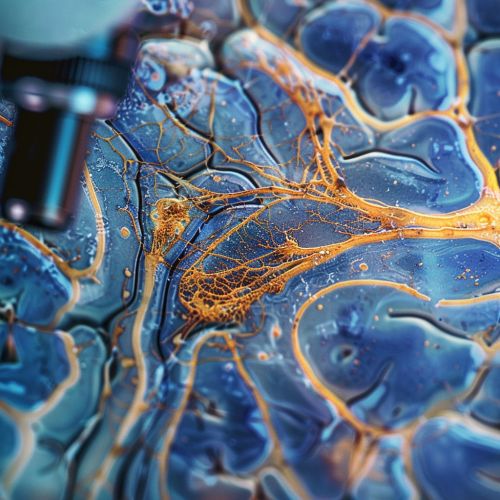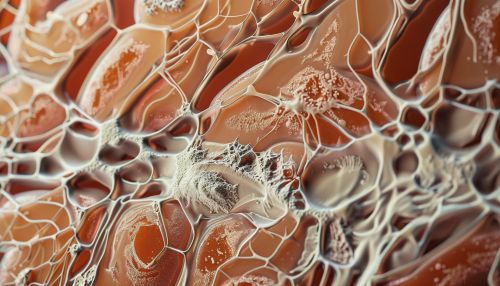Neuropathology
Overview
Neuropathology is a medical discipline that studies diseases of the nervous system, and typically includes both the central and peripheral nervous systems. It is a subspecialty of anatomic pathology and neurology, and is closely related to neurosurgery. Neuropathologists diagnose and study neurological diseases through the examination of tissue samples from the brain, spinal cord, peripheral nerves, and muscles.


History
The field of neuropathology has its roots in the 19th century, with the work of pioneers such as Jean-Martin Charcot and Alois Alzheimer. These early neuropathologists made significant contributions to our understanding of neurological diseases, including the identification of multiple sclerosis and Alzheimer's disease.
Neuropathological Techniques
Neuropathologists use a variety of techniques to diagnose and study neurological diseases. These include gross examination of the brain, microscopic examination of tissue samples, and the use of advanced imaging techniques such as MRI and CT scans.
Gross Examination
Gross examination involves the visual inspection of the brain and other nervous system tissues. This can reveal abnormalities such as tumors, hemorrhages, or signs of degenerative diseases.
Microscopic Examination
Microscopic examination involves the use of a microscope to study tissue samples at a cellular level. This can reveal more detailed information about the disease process, including the presence of abnormal cells or structures.
Advanced Imaging Techniques
Advanced imaging techniques such as MRI and CT scans can provide detailed images of the brain and other nervous system tissues. These images can reveal abnormalities that may not be visible through gross or microscopic examination.
Common Neuropathological Conditions
Neuropathologists diagnose and study a wide range of neurological diseases. These include neurodegenerative diseases such as Alzheimer's disease and Parkinson's disease, as well as other conditions such as brain tumors, strokes, and epilepsy.
Alzheimer's Disease
Alzheimer's disease is a neurodegenerative disease that results in progressive memory loss and cognitive decline. Neuropathologists study the brain tissue of patients with Alzheimer's disease to understand the disease process and identify potential treatments.
Parkinson's Disease
Parkinson's disease is a neurodegenerative disease that results in motor symptoms such as tremors and rigidity. Neuropathologists study the brain tissue of patients with Parkinson's disease to understand the disease process and identify potential treatments.
Brain Tumors
Brain tumors are abnormal growths of cells in the brain. Neuropathologists diagnose brain tumors through the examination of tissue samples, and their work is critical in determining the best course of treatment for patients.
Strokes
Strokes occur when the blood supply to part of the brain is interrupted, resulting in brain damage. Neuropathologists study the brain tissue of patients who have had strokes to understand the damage and identify potential treatments.
Epilepsy
Epilepsy is a neurological disorder characterized by recurrent seizures. Neuropathologists study the brain tissue of patients with epilepsy to understand the disease process and identify potential treatments.
Future Directions in Neuropathology
The field of neuropathology continues to evolve, with advances in technology and our understanding of the brain leading to new diagnostic and treatment approaches. Future directions in neuropathology may include the use of advanced imaging techniques to diagnose diseases earlier, the development of new treatments for neurodegenerative diseases, and the use of genetic testing to identify individuals at risk for certain neurological diseases.
